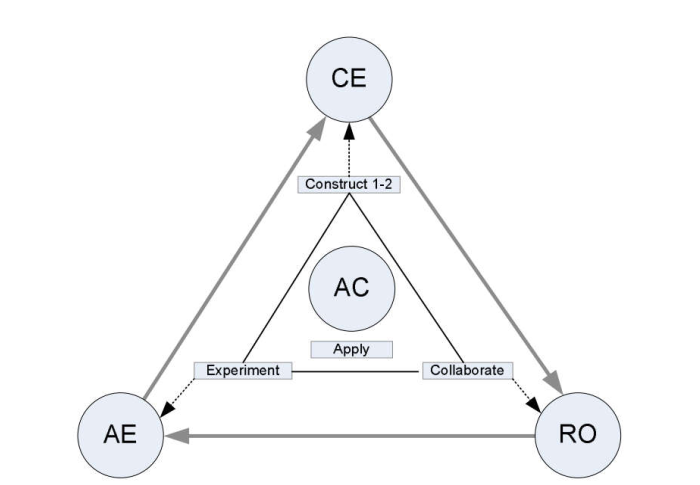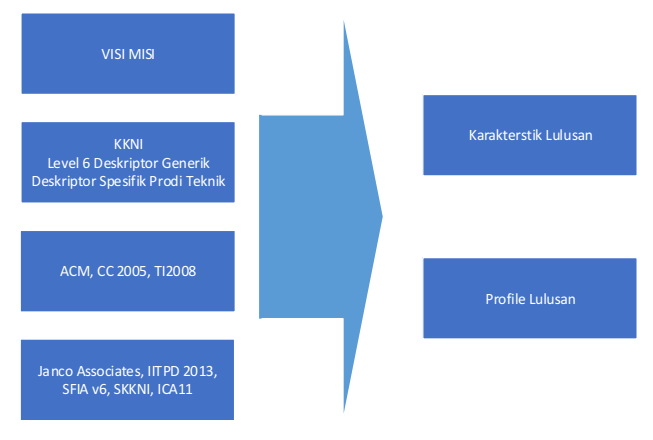[siteorigin_widget class=”SiteOrigin_Widget_Image_Widget”][/siteorigin_widget]
CURRICULLUM
Based on the vision and mission of departement Informatics Engineering, Informatics Engineering Study Program seeks to prepare Islamic Information Engineering scholar, noble berkahlaq with the ability to understand the concept, analysis and application in the community, diligent work and responsible. In the curriculum of Informatics Engineering Program, the vision and mission mentioned above are poured in the main competence, supporting competence, and other competence. Excellence Informatics Engineering Study Program is placed on mastering the main competencies supported by the supporting competencies. The role and contribution to Humanity based on Islamic values is poured into other competencies. In more detail, Informatics Engineering Study Program of UMY seeks to produce graduates who master the main competence in information technology with technical capability in the field of methodology, design, programming, development and testing application as follows:
- Application developer
- Developer database (Database Developer).
- Web System Developer (Web System Developer).
- System administrator (System Adminisrator).
- Information Technology Security Expert.Infor
- mation Technology Project Manager (Information Technology Project Manager)
[siteorigin_widget class=”SiteOrigin_Widget_Image_Widget”][/siteorigin_widget]
LEARNING METHOD
In the implementation of Teaching learning activities, the learning method used is Learning Architecture Based on Collaborative Constructivism (LACC). LACC is a learning method facilitate various types of learning, namely concrete experiences, reflective observation, active experimentation and abstract conceptualization.
1. CONSTRUCT (Building knowledge)
Learning begins with this component. An experienced and experienced lecturer is required to guide students here. In this phase, the lecturer introduces new concepts on students to build their knowledge. Lecturers provide concrete experiences for students through explanations and demonstrations. This phase is intended to provide the necessary basis for students to move on to the next phase.
2. COLLABORATIVE (Learning group)
This learning phase enables the learner to have contextual experience on learning materials through Collaborative learning. Students are provided with practical means to perform reflective observations in groups. Students are provided with tools for case studies, practice sequence instructions, and how to prepare reports to reflect on the learning concepts of the previous session. This phase also aims to enable students to apply understanding in a broader context.
3. EXPERIMENT (Trial)
In this phase, each student is active and individual to carry out experiments and observations. This phase aims to make the learning process effective because every student understands the concept then makes a logical conclusion. In this way students are expected to have a better learning experience.
4. APPLY (Application of knowledge)
In this phase, provided a model of learning to form a learning environment so that students are more conceptually understood Students are required to read, understand, refer, compare, think and behave according to the knowledge they get. Then, students can create solutions to a real case for improving information retrieval skills, performing analysis, and using reference resources.

1. CONSTRUCT (Building knowledge)
Learning begins with this component. An experienced and experienced lecturer is required to guide students here. In this phase, the lecturer introduces new concepts on students to build their knowledge. Lecturers provide concrete experiences for students through explanations and demonstrations. This phase is intended to provide the necessary basis for students to move on to the next phase.
2. COLLABORATIVE (Learning group)
This learning phase enables the learner to have contextual experience on learning materials through Collaborative learning. Students are provided with practical means to perform reflective observations in groups. Students are provided with tools for case studies, practice sequence instructions, and how to prepare reports to reflect on the learning concepts of the previous session. This phase also aims to enable students to apply understanding in a broader context.
3. EXPERIMENT (Trial)
In this phase, each student is active and individual to carry out experiments and observations. This phase aims to make the learning process effective because every student understands the concept then makes a logical conclusion. In this way students are expected to have a better learning experience.
4. APPLY (Application of knowledge)
In this phase, provided a model of learning to form a learning environment so that students are more conceptually understood Students are required to read, understand, refer, compare, think and behave according to the knowledge they get. Then, students can create solutions to a real case for improving information retrieval skills, performing analysis, and using reference resources.

[siteorigin_widget class=”SiteOrigin_Widget_Image_Widget”][/siteorigin_widget]
PROFILE AND CHARACTERISTICS
Profile and characteristics of IT Prodi graduates are the result of study from various sources. Sources of resources studied are: Indonesian National Qualification Framework (KKNI) Technical Study Program to determine the level of qualification, ACM TI 2008 used as a reference determination of learning outcome and field of study of IT study program to other fields in the field of computer science, and IT Job Descriptions Information Technology Position Descriptions HandiGuide 2013 which is used as reference for adjustment of profile and work field of IT graduates. An illustration of the assessment of these sources can be seen in the following diagram.
